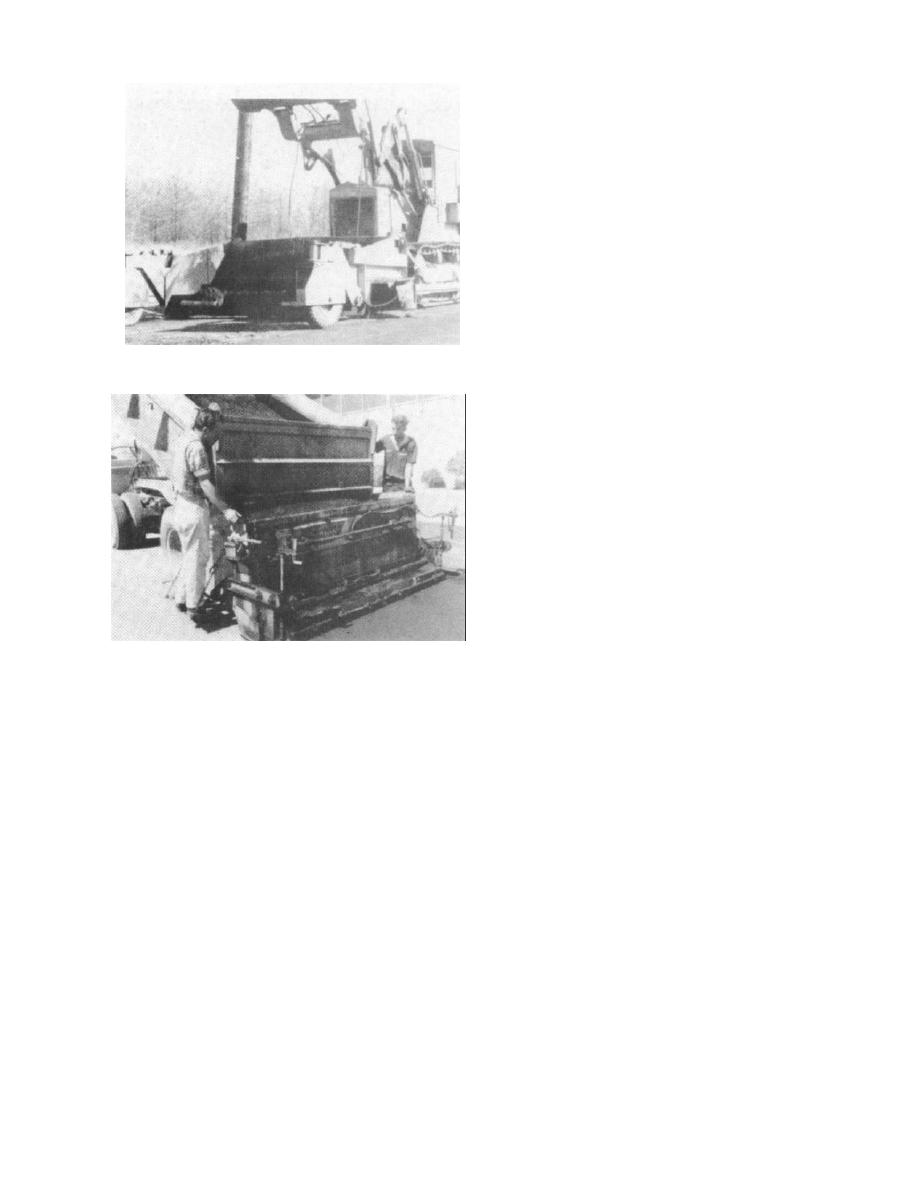
TM
5-822-14/AFJMAN
32-1019
asphalt metering pump. A spray nozzle arrange-
ment at the mixer distributes the asphalt over the
aggregate. As the proportioned materials move
through the pugmill, completely mixed material,
ready for spreading, is discharged for subsequent
hauling to the road site.
(2) Aerating plant mix. Mixtures that require
aerating are generally deposited upon the roadbed
in windrows and then are spread from these
windrows. The cold mix is spread with a motor
grader and aerated by blading it back and forth, or
it is aerated by rotary tiller mixing equipment.
(3) Spreading and compacting plant mix. If
aeration is not required-as is generally the case
with plant-mixed emulsified asphalt mixes-the
Figure 4-57. Jersey spreader.
mixture is most effectively spread with asphalt
pavers having automatic controls. For deep lifts,
however, other equipment such as the Jersey
Spreader type, towed spreaders, large cutter-
trimmer-spreaders, or motor graders may be used.
Similar to mixed-in-place, central plant cold mixes
gain stability as the diluents (that have made the
mix workable) evaporate. It is important not to
hinder this process. Therefore, lift thicknesses are
limited by the rate that the mixture loses its
diluents. The most important factors affecting this
loss are the type of asphalt, diluent content,
gradation, and temperature of the aggregate, wind
velocity, ambient temperature, and humidity. Be-
cause of these variables, local experience is likely
to be the best guide in determining allowable
placement thicknesses. The mixture should be
Figure 4-58. Towed-type spreader.
spread uniformly on the roadbed, beginning at the
point farthest from the mixing plant. Hauling over
freshly placed material should not be permitted
ers measure and govern the flow of aggregates in
except when required for completion of the work.
relation to the output of a positive displacement
4-27


 Previous Page
Previous Page
